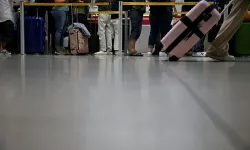After years of debate, the Council of Europe announced in a statement that the Council has approved the new Agreement on Migration and Asylum.
"These new rules will make the European asylum system more efficient and increase solidarity between Member States," said Nicole de Moor, Minister for Asylum and Migration under the Belgian EU Presidency. The EU will also continue to cooperate closely with third countries to tackle the root causes of irregular migration."
It was noteworthy that such a decision on migration and asylum management, which is one of the important elements of the election campaigns, was taken 3 weeks before the European Parliament (EP) elections.
The agreement approved by the EP on April 10 will enter into force after its publication in the EU Official Journal. Implementation will only start in 2026. Member states must adopt the agreement in their national laws within 2 years.
WHAT IS IN THE AGREEMENT?
Migration and asylum are currently regulated by the Dublin Convention, signed in the Irish capital in 1990. It requires refugees to apply for asylum in their first country of destination and then, if they move to another EU country, to be transferred to the country of origin.
The Commission, as the EU's agency responsible for managing irregular migration, has prepared the "Agreement on Migration and Asylum", a series of legislative proposals to replace the Dublin Convention, the functionality of which has become a matter of debate in the wake of the migration crisis.
The new rules, announced by Commission President Ursula von der Leyen in her first State of the Union address to the EP in September 2020, almost a year after she took office, aim to shift the burden of migration away from countries of first arrival and distribute it among all members.
Other important elements of the agreement include strengthening the EU's external borders, speeding up the processing of asylum applications, accelerating the return of rejected asylum seekers to their countries of origin, and increasing cooperation with source countries.
Under the new rules, asylum seekers will be identified within days of their arrival in the EU and their details will be stored in the EU database. This will determine whether a person poses a risk and whether they should be allowed to stay.
If a country thinks it is carrying too much of a burden, it will be able to ask for more solidarity. In crisis situations, all 27 member states will decide together.
The new agreement will also allow for faster deportation of people to countries of origin or transit if they have been declared safe.
CRITICISM OF THE NEW RULES
International human rights organizations are concerned that the EU's new migration and asylum rules could pave the way for expanded border controls and the detention of migrants in reception centers for months.
They also draw attention to the risk of violating obligations under refugee law and international human rights law in practice, as the new rules provide member states with various exemptions in cases of "force majeure".
The new rules are seen as a step towards the EU's "extraterritorialization" of border control through agreements with third countries and Europe's evasion of its responsibility for refugee protection.











